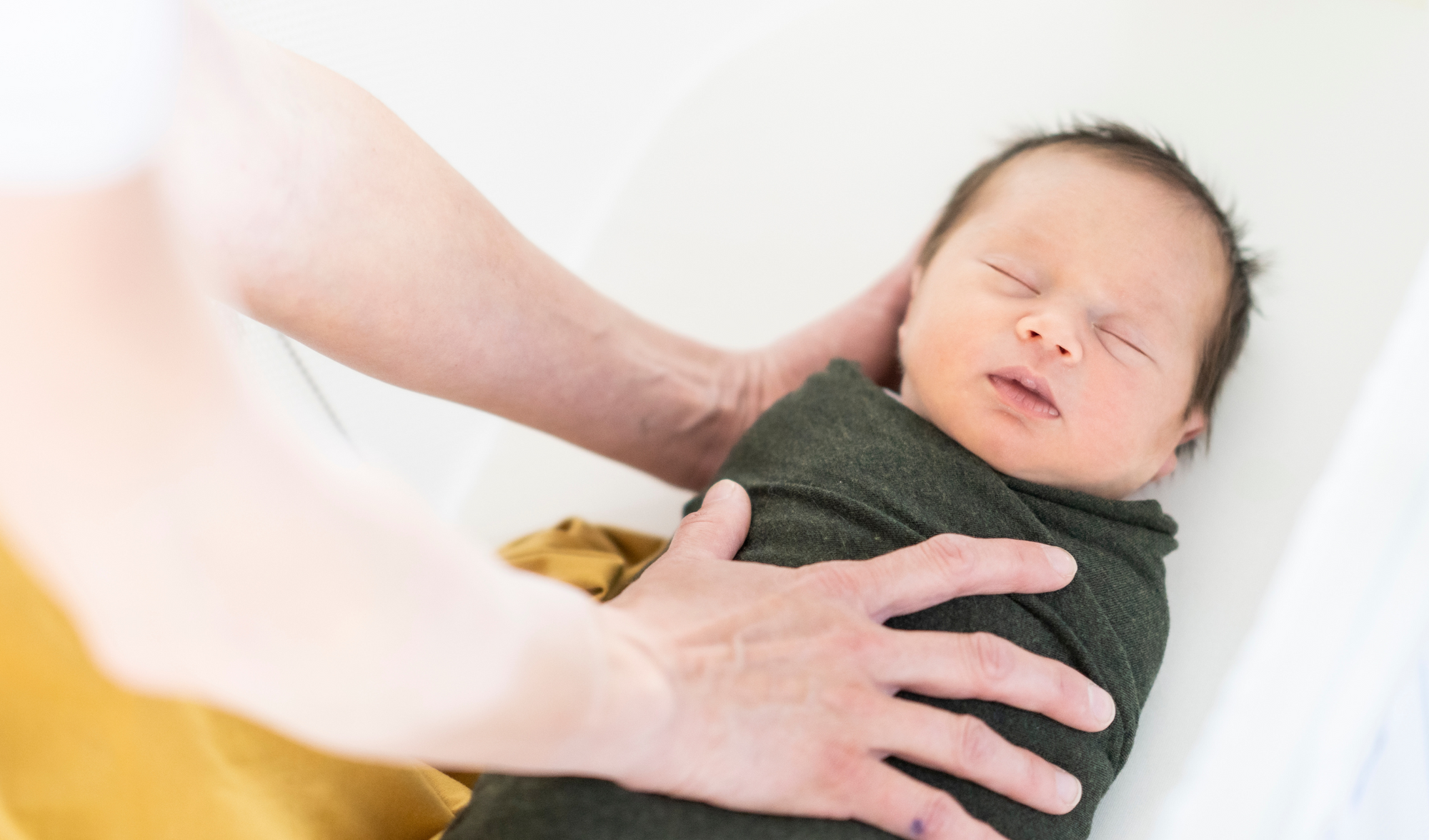Tummy time for a one-month-old looks considerably different from tummy time for a three-month-old. However, most parents are unaware of this when informed that their newborns should be having tummy time.
You may have heard how important tummy time is for your baby's growth, and you may be one of the many parents who believe tummy time is simply about your baby lifting their head to improve neck strength. Understanding your baby's tummy time milestones can help you play with your baby more confidently and imaginatively and in ways that correspond to their developing abilities. These tiny signals can also help you better understand your baby's growth path.
What Is Tummy Time?
Tummy time entails putting your wide-awake baby on their stomach for short periods of time while keeping a watchful eye on them. This activity is beneficial to your child's growth because it strengthens the neck and shoulder muscles whilst improving motor skills.
During tummy time, keep in mind that your baby should be attentive, awake and supervised at all times. Parents, keep reading to learn what to watch for at each step!
Tummy Time: Month 1
Newborn babies can be placed safely on their tummies because believe it or not, they have the neck muscles to lift their head enough and turn it to place the opposite cheek down. It encourages their legs to begin to straighten so their lower belly touches the surface underneath them. Tummy time is also important for babies because it counteracts all of the flexion they retained from being in the womb.
Tummy Time: Month 2
By their second month, your baby will look less curled up in the fetal position than before. Their arms start to move further away from the body and they will eventually begin to press their hands down on the floor in order to push their shoulders and chest up very slightly. Your baby may also manage to put some weight on their forearms and shoulders and bring their hands out from underneath their chest.
Tummy Time: Month 3
By your baby’s third month you may notice they are able to lift their head between 45-90 degrees without bobbing. They will be able to put more weight on their elbows and lift their shoulders by holding their weight on the forearms. This helps build strength in the chest and shoulder muscles. They can turn their head to either side and might roll themselves over (we call this accidental rolling when your baby's body follows their relatively heavy head and plops over from tummy to back).
Tummy time: Month 4
Now your little one should be able push even higher with their forearms and lift their head relatively easily to 90 degrees. You will notice they will also have better neck control and they may be lifting their arms and legs off the floor and rocking, almost as if they were swimming.
Tummy Time: Month 5
At this stage your baby is probably showing signs of trying to reach objects and will generally be trying to get on the move while on their tummy. You may also notice that they are managing to straighten their arms to lift their chest right up off the floor.
Tummy Time: Month 6
Motor control will have increased by now, meaning your little one is less likely to topple over when on their tummy and trying to reach for things. They may also be starting to move when on their tummy by twisting in a semi-circle using their arms. Your little one will also be doing a good impression of a push up with belly on the floor and arms straight.
Tummy Time: Month 7
Their shoulder and hip stability should have improved massively now and they should now be able to rotate round to reach toys. Your baby can also take their weight on one elbow and may even be able to get on their hands and knees and rock which is the early stages of starting to crawl.
Tummy Time: Month 8
By now your little one probably no longer needs their upper body to help lift their lower body and might kneel more and more, making it easier for them to play. Around this time some babies start pulling themselves up to stand from an all fours position.
Tummy Time: Month 9
One way or another, your baby will be moving around by now and often this is in the form of crawling. Switching between tummy time, all fours and sitting will be a lot easier now with the increased muscle control they’ve built up.
Tummy Time: Month 10
Pulling to stand with one foot in front, kneeling (half-kneeling) may be the latest achievement, which is one step closer to standing. Your baby may now also be able to shift their weight to rotate their body, thanks to all that muscle control they’ve been working on!.
Tummy Time: Month 11
Hands are less important for your little one to stand now as their leg and hip muscles are much stronger, meaning kneeling and half kneeling are much easier and involve a lot less falling over.
Tummy Time: Month 12
Now your little one should be able to control one side of their body independent of the other side. This helps improve their shifting of weight and helps their stability when standing. Soon after this they will be ready to take those crucial first steps.
Keep in mind that not all children are created equal. Because each baby develops at their own pace, not all babies will hit these milestones at the same time.
FAQs About Tummy Time
Q: Is tummy time only for strengthening neck muscles?
A: While neck strengthening is a crucial aspect, tummy time offers a holistic approach to your baby's physical and cognitive development. It also promotes motor skills, coordination, and exploration.
Q: What if my baby doesn't like tummy time?
A: It's common for some babies to resist tummy time initially. Gradually introduce it for short durations, incorporate engaging toys or a mirror, and make it a playful experience. Consistency is key.
Q: Can tummy time be done right after feeding?
A: It's generally recommended to wait a bit after feeding to avoid discomfort. Aim for a gap of about 30 minutes to allow digestion before introducing tummy time.
Q: How often should tummy time be practiced?
A: Begin with short sessions several times a day, gradually increasing as your baby becomes more comfortable. Aim for a total of 15-30 minutes daily, but listen to your baby's cues and adjust accordingly.
Q: Is it okay for my baby to nap on their tummy during supervised tummy time?
A: Yes, supervised napping on the tummy during the day can be beneficial. However, always follow safe sleep guidelines during nighttime sleep, placing your baby on their back.
Q: Can tummy time help with gas and digestion?
A: Yes, tummy time can aid in relieving gas discomfort and promoting digestion. The gentle pressure on the abdomen can facilitate the release of trapped gas.
Q: Are there alternatives to traditional tummy time on the floor?
A: Yes, you can incorporate tummy time in your lap, over a nursing pillow, or on your chest during skin-to-skin time. These variations still provide the benefits while keeping your baby close.
Q: Should tummy time be stopped once my baby starts crawling?
A: No, tummy time remains beneficial even after your baby starts crawling. It helps strengthen different muscle groups and contributes to overall physical development.
Q: How can siblings participate in tummy time activities?
A: Encourage older siblings to join by playing with toys, making funny faces, or lying next to the baby during tummy time. This promotes bonding and makes the experience enjoyable for everyone.
Q: Can tummy time be combined with other activities, like reading or singing?
A: Absolutely! Combining tummy time with activities like reading or singing not only enhances the experience but also provides additional opportunities for sensory stimulation and interaction.
Q: Is there a recommended age to introduce the Babocush comfort cushion for tummy time?
A: The Babocush comfort cushion can be introduced from birth. Its ergonomic design provides support and comfort, making tummy time enjoyable for your baby right from the start.
Explore tummy time with confidence, armed with these answers to frequently asked questions. Remember, each baby is unique, so tailor your approach to suit your little one's pace and preferences.


